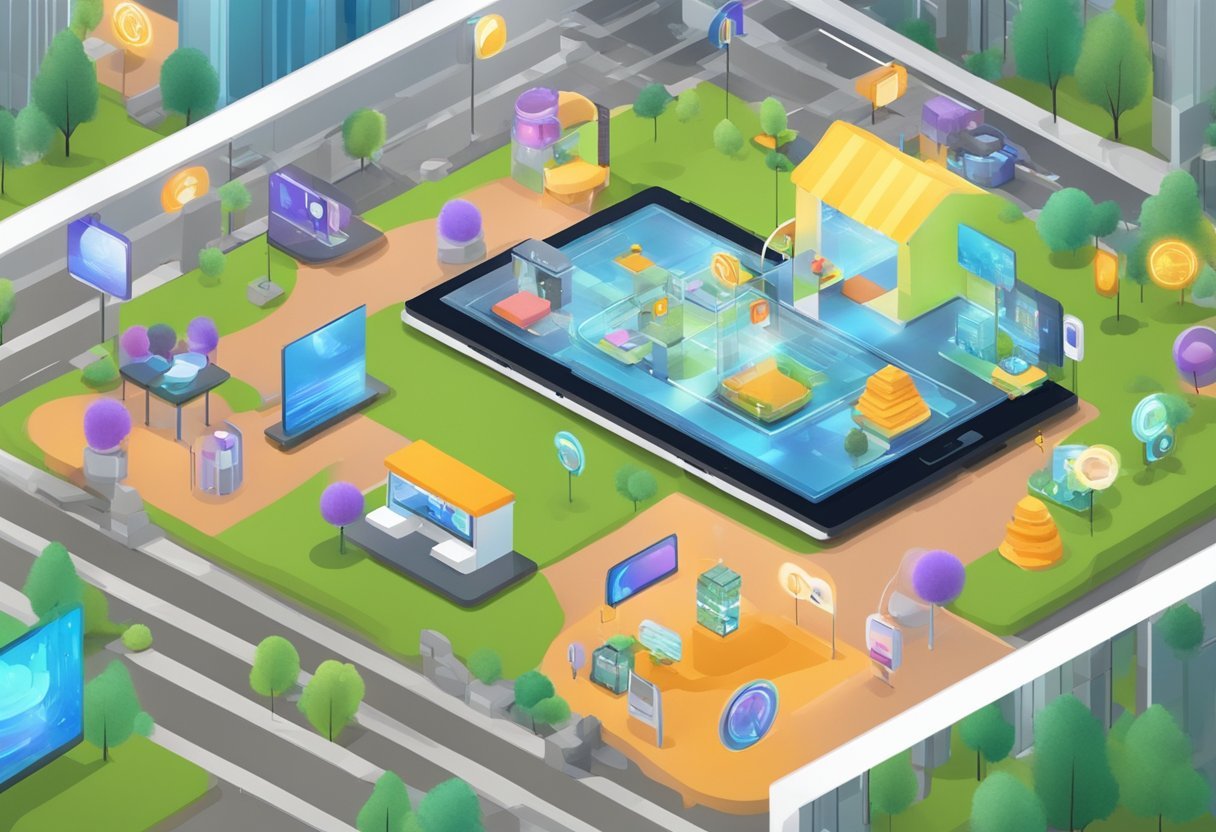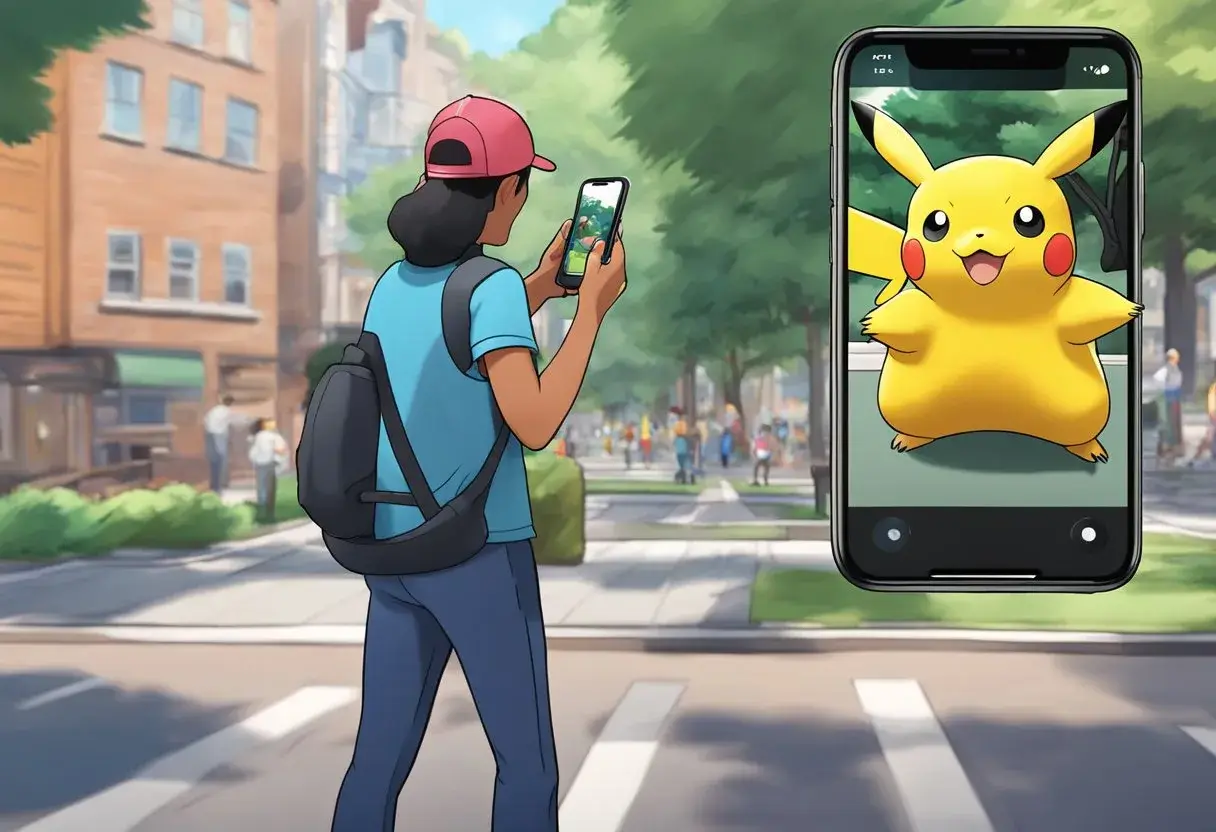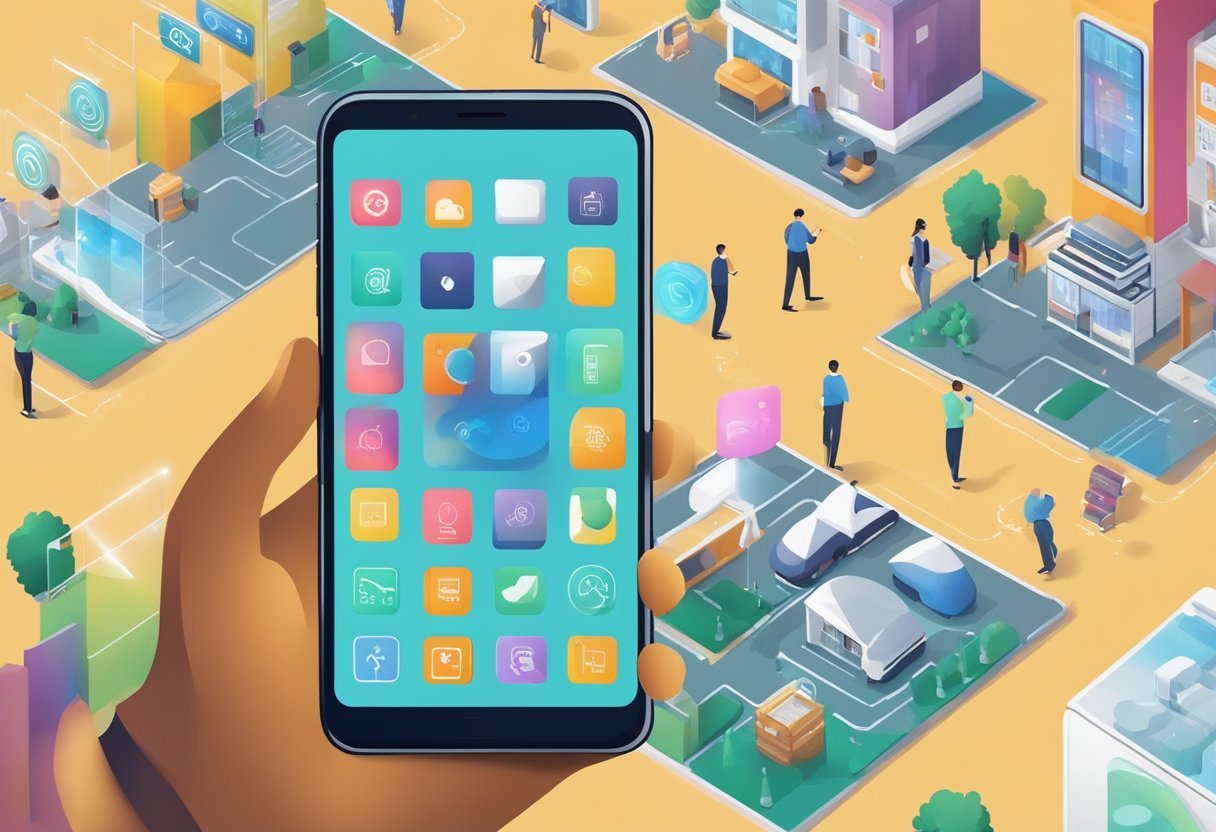Augmented reality (AR) is a technology that has been growing in popularity in recent years. It allows users to view the real world with computer-generated objects superimposed on top of it. This technology has been used in a variety of applications, from gaming and entertainment to education and training. In this blog post, I will share with you the top 15 augmented reality platforms to start your AR project effectively.
AR platforms are the software and hardware systems that enable the creation and deployment of AR experiences. These platforms provide developers with the tools they need to create AR applications for a variety of devices, including smartphones, tablets, and wearable devices. Some of the most popular AR platforms include Google ARCore, Apple ARKit, and Vuforia Engine.
Designing effective AR experiences requires an understanding of the fundamentals of AR, including the hardware and software that make it possible. It also requires a creative approach to designing experiences that are engaging and intuitive for users. With the right tools and knowledge, developers can create AR experiences that are both fun and functional, and that have the potential to revolutionize the way we interact with the world around us.
Key Takeaways
- AR platforms are software and hardware systems that enable the creation and deployment of AR experiences.
- Effective AR experiences require an understanding of the fundamentals of AR and a creative approach to design.
- Popular AR platforms include Google ARCore, Apple ARKit, and Vuforia Engine.
Fundamentals of Augmented Reality
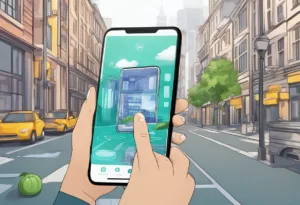
Augmented Reality (AR) is an immersive technology that blends digital content with the real world. It overlays computer-generated images and information onto the user’s view of the real world, creating a mixed reality experience.
AR technology is different from Virtual Reality (VR) and Mixed Reality (MR). AR technology enhances the user’s perception of the real world, whereas VR technology replaces it with a simulated environment. MR technology combines real and virtual worlds to create a new environment.
Understanding AR Technology
AR technology uses a variety of hardware and software components to create a seamless experience. AR displays can be seen through a variety of devices, including smartphones, tablets, and head-mounted displays. The technology uses computer vision to track the user’s movements and position in the real world, enabling it to overlay digital content in real-time. AR technology also relies on holographic displays, which project images onto a transparent screen, creating a 3D effect.
AR vs. VR and MR
AR technology is different from VR and MR technology. VR technology creates a fully immersive experience by replacing the user’s view of the real world with a simulated environment. MR technology combines real and virtual worlds to create a new environment.
AR technology enhances the user’s perception of the real world by overlaying digital content onto it. AR technology is used in a variety of applications, including gaming, education, and marketing. It is also used in healthcare, where it can be used to enhance medical training and assist with surgery.
AR technology is a rapidly evolving field, with new developments and applications emerging all the time. As the technology continues to improve, it is likely that we will see more widespread adoption of AR technology in the future.
Augmented Reality Hardware
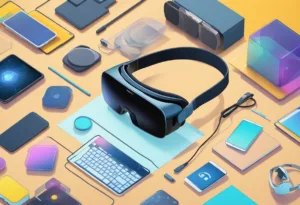
Augmented reality (AR) hardware includes devices that enable users to experience the real world with an overlay of digital content. AR hardware is available in different forms, including AR glasses and headsets, as well as mobile AR devices.
AR Glasses and Headsets
AR glasses and headsets are wearable devices that allow users to view digital content overlaid on the real world. These devices come equipped with sensors, cameras, processors, and display systems that enable them to track the user’s head movements and display digital content in real-time.
One example of AR glasses is the Meta Quest 2, which is a standalone headset that allows users to experience immersive AR and VR content. The Meta Quest 2 uses sensors and cameras to track the user’s head movements and display digital content in real-time.
Another example of AR glasses is the Google Glass Enterprise Edition 2, which is designed for enterprise use. The Google Glass Enterprise Edition 2 is equipped with a camera, processor, and display system that allows users to view digital content overlaid on the real world.
Mobile AR Devices
Mobile AR devices are smartphones and tablets that enable users to experience AR content on the go. These devices come equipped with sensors, cameras, and processors that enable them to track the user’s movements and display digital content in real-time.
One example of a mobile AR device is the iPhone, which comes equipped with a camera, processor, and sensors that enable it to track the user’s movements and display AR content in real-time. Another example is the iPad, which has a larger display system that enables users to experience more immersive AR content.
AR hardware is available in different forms, including AR glasses and headsets, as well as mobile AR devices. These devices come equipped with sensors, cameras, processors, and display systems that enable them to track the user’s movements and display digital content in real-time.
15 Best Augmented Reality Platforms
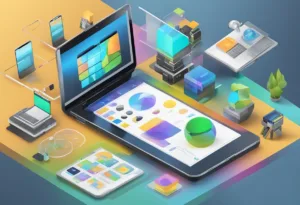
- Google ARCore
- Apple ARKit
- Spark AR Studio
- Vuforia Engine
- Adobe Aero
- Hololink
- Vuforia Studio
- Sketchfab
- Niantic
- ARToolKit
- Wikitude
- Unity
- Unreal Engine
- Zappar
- EasyAR
Google ARCore
Google ARCore is an augmented reality platform designed for building AR experiences. It enables developers to blend digital content with the physical world through motion tracking, environmental understanding, and light estimation. ARCore uses three key capabilities to integrate virtual content with the real world: Plane Detection to recognize flat surfaces, Light Estimation to match lighting, and Feature Points to understand the environment. It allows for user interaction with AR objects and supports both Android and iOS devices.
Apple ARKit
Apple ARKit is a framework that allows developers to create augmented reality experiences for iPhone and iPad. It provides advanced face tracking, realistic rendering, and support for 3D object detection. ARKit also includes Scene Geometry for understanding the structure of a scene, allowing for more immersive interactions. It’s known for its robust tracking and performance, as well as seamless integration with iOS devices.
Spark AR Studio
Spark AR Studio is a platform by Facebook that enables creators to build AR experiences for Instagram and Facebook. It offers a wide range of features, including face tracking, animation, audio, and interaction triggers. Spark AR supports both 2D and 3D content, providing tools for artists and developers to create engaging and shareable AR effects for a massive social media audience.
Vuforia Engine
Vuforia Engine is a comprehensive AR platform that supports a wide range of devices, including phones, tablets, and eyewear. It features robust tracking capabilities, such as Image Targets and 3D Object Recognition, and supports the development of AR experiences that can be deployed across various operating systems. Vuforia also offers Vuforia Chalk, which facilitates AR remote assistance.
Adobe Aero
Adobe Aero is a platform designed for artists and designers to create immersive AR experiences without requiring in-depth coding knowledge. It integrates with other Adobe Creative Cloud applications and allows users to build interactive AR projects using assets from Photoshop and Illustrator. Aero focuses on storytelling and provides a user-friendly interface for creating AR scenes.
Hololink
Hololink is an AR platform geared towards ease of use, allowing creators to build AR experiences without extensive programming skills. It focuses on web-based AR, meaning that the experiences can be accessed through a browser without the need for additional apps. Hololink enables the creation of interactive AR content that can be used for education, marketing, and storytelling.
Vuforia Studio
Vuforia Studio is part of the Vuforia AR product suite, enabling industrial enterprises to create AR experiences for service, training, and sales. It allows for the visualization of IoT data and 3D content in the context of the real environment, enhancing understanding and efficiency in complex processes. Vuforia Studio is known for its use in enterprise settings and its ability to create scalable AR experiences.
Sketchfab
Sketchfab is a platform that allows users to publish, share, and discover 3D, VR, and AR content. It hosts a vast collection of models and provides an online viewer that supports AR mode. Sketchfab is used by a variety of professionals, from artists to cultural heritage organizations, to display and interact with 3D content in an AR setting.
Niantic
Niantic, the company behind popular AR games like Pokémon GO, offers a platform for real-world gaming and AR experiences. Their platform leverages location-based technology to encourage users to explore their surroundings while interacting with virtual objects and characters. Niantic’s platform is known for its ability to create communal and engaging AR experiences tied to physical locations.
ARToolKit
ARToolKit is an open-source AR library that supports a wide range of platforms. It enables the tracking of markers or natural features to overlay virtual objects in the real world. ARToolKit is used for various applications, from simple AR games to complex visualization and educational tools, due to its flexibility and ease of use for developers.
Wikitude
Wikitude is an AR platform that provides tools for location-based and marker-based AR experiences. It supports multiple development frameworks and offers features like image recognition, tracking, and 3D model rendering. Wikitude is designed for creating interactive marketing campaigns, educational content, and innovative app experiences.
Unity
Unity is a cross-platform game engine that has extended its capabilities to AR development. With Unity, developers can create high-quality AR experiences using a comprehensive set of tools and a robust asset store. Unity supports AR Foundation, a framework that allows for multi-platform AR development, and integrates with ARKit and ARCore for seamless AR app creation.
Unreal Engine
Unreal Engine, developed by Epic Games, is a powerful game engine that also supports AR development. Known for its high-fidelity graphics and real-time rendering capabilities, Unreal Engine allows creators to build immersive AR experiences with dynamic lighting and complex physics. It is suitable for high-end AR applications and games that require detailed visual quality.
Zappar
Zappar is an AR platform focused on making AR accessible and affordable. It offers a suite of tools for creating AR experiences, including ZapWorks, which caters to different skill levels from beginners to advanced developers. Zappar is widely used for marketing and educational purposes, providing an easy way to bring products and print materials to life with AR.
EasyAR
EasyAR is an AR development platform that offers features like 3D object tracking, screen recording, and cloud recognition. It aims to provide a simple and efficient way for developers to create AR experiences. EasyAR supports both Android and iOS and is suitable for a range of applications, from interactive advertising to educational content.
Augmented Reality (AR) is a rapidly growing technology that has taken the world by storm. AR software and platforms have revolutionized the way we interact with our surroundings. In this section, we will discuss some of the popular AR platforms and SDKs that are used by developers to create immersive AR experiences.
SDKs and Development Tools
ARKit is a popular SDK for developing AR applications on iOS devices. It provides developers with tools to create AR experiences that are integrated with the device’s camera and sensors. ARKit is used by many developers to create AR games and applications.
Unity is another popular development tool for creating AR experiences. It is a cross-platform game engine that allows developers to create games and applications for a wide range of platforms, including mobile devices, consoles, and desktop computers. Unity provides developers with a wide range of tools and features that make it easy to create AR experiences.
Wikitude is an augmented reality SDK that allows developers to create AR experiences for mobile devices. It provides developers with tools to create AR applications that are integrated with the device’s camera and sensors. Wikitude is used by many developers to create AR applications for retail, advertising, and entertainment.
Popular AR Platforms
Google ARCore is a popular AR platform that allows developers to create AR experiences for Android devices. It provides developers with tools to create AR applications that are integrated with the device’s camera and sensors. ARCore is used by many developers to create AR games and applications.
Snapchat is another popular AR platform that allows users to create AR experiences using the app’s camera. It provides users with a wide range of AR filters that can be applied to photos and videos. Snapchat is used by many users to create fun and engaging AR experiences.
AR software and platforms have revolutionized the way we interact with our surroundings. Developers can use a wide range of SDKs and development tools to create immersive AR experiences. Popular AR platforms like Google ARCore and Snapchat have made it easy for users to create fun and engaging AR experiences.
Designing AR Experiences
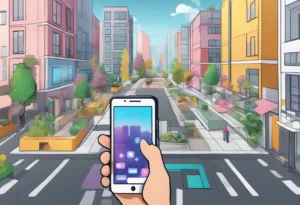
Creating augmented reality experiences requires careful consideration of several factors. The design process involves creating interactive content and ensuring that the user interface and user experience are optimized for the best immersion.
Creating Interactive Content
To create immersive AR experiences, designers must use 3D models or computer-generated content. These models can be created using software such as Blender or Maya. The models should be optimized to ensure they are lightweight and run smoothly on the chosen platform. One way to ensure the best user experience is to use the USDZ file format, which is optimized for AR Quick Look. USDZ files can be created using software such as Reality Composer or Adobe Aero.
Object recognition and gesture recognition are also essential components of interactive AR experiences. Object recognition allows AR devices to recognize and track real-world objects, while gesture recognition enables users to interact with AR content using hand gestures.
User Interface and UX Considerations
When designing AR experiences, designers must consider the user interface and user experience. The user interface should be simple and intuitive to use, allowing users to interact with the AR content seamlessly.
The user experience should be optimized for immersion, ensuring that users feel fully immersed in the AR experience. This can be achieved by using sound effects, haptic feedback, and other sensory cues to enhance the experience.
Designing AR experiences requires careful consideration of several factors. By creating interactive content and optimizing the user interface and user experience, designers can create immersive and engaging AR experiences for their audience.
Applications of Augmented Reality
Augmented Reality (AR) has a wide range of applications in various fields such as gaming, education, social media, and architecture. The following subsections will explore some of the most prominent uses of AR.
AR in Gaming and Entertainment
AR technology has revolutionized the gaming industry, providing gamers with a more immersive experience. Games like Pokémon Go have taken the world by storm, allowing players to catch virtual creatures in the real world. AR technology has also been used in other entertainment applications such as the IKEA Place app, which allows users to preview furniture in their home before purchasing it.
Educational and Professional Uses
AR technology has also found its way into the education and professional world. In education, AR can be used to create interactive learning experiences, allowing students to visualize complex concepts in a more engaging way. AR can also be used in professional settings, such as in architecture, where it can be used to create virtual models of buildings and structures.
Augmented Reality in Social Media
Social media platforms like Snapchat and Instagram have integrated AR technology into their apps, allowing users to add filters and effects to their photos and videos. AR filters have become a popular way for brands to engage with their audience and promote their products.
Innovation in AR technology has led to the development of the metaverse, a virtual world where users can interact with each other in a more immersive way. The metaverse is expected to be the next big thing in AR technology, providing users with a more realistic and engaging virtual experience.
AR technology has the potential to transform the way we interact with the world around us. As the technology continues to evolve, we can expect to see even more innovative uses of AR in various fields.
Frequently Asked Questions
What are the top augmented reality platforms for beginners?
For beginners, some of the top augmented reality platforms include Google ARCore, Apple ARKit, and Vuforia Studio. These platforms are user-friendly and provide a range of features that can help beginners create augmented reality experiences with ease.
Which augmented reality tools are available for free?
There are several free augmented reality tools available that can be used to create AR experiences. Some of these tools include Spark AR Studio, Vuforia Engine, and EasyAR. These platforms offer a range of features and can be used by both beginners and professionals.
What are some prominent examples of augmented reality platforms?
Some of the most prominent examples of augmented reality platforms include Google ARCore, Apple ARKit, and Vuforia Engine. These platforms are widely used and offer a range of features that can be used to create engaging AR experiences.
How do augmented reality platforms differ from one another?
Augmented reality platforms differ from one another in terms of features, ease of use, and compatibility with different devices. Some platforms are designed for specific industries, such as construction, while others are more general-purpose. It is important to consider the specific needs of a project when choosing an AR platform.
What software do professionals use for augmented reality development in construction?
Professionals in the construction industry often use software such as Trimble Connect and Autodesk BIM 360 to create augmented reality experiences. These platforms are designed specifically for the construction industry and offer a range of features that can help professionals visualize and plan construction projects.
How does virtual reality differ from augmented reality in terms of user experience?
Virtual reality (VR) and augmented reality (AR) differ in terms of user experience in that VR provides a completely immersive experience, while AR overlays virtual elements onto the real world. With VR, the user is completely immersed in a virtual environment, while with AR, the user is still aware of their surroundings. VR typically requires specialized hardware, such as a headset, while AR can be experienced using a smartphone or tablet.

